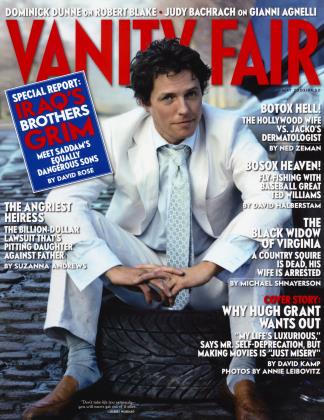Sign In to Your Account
Subscribers have complete access to the archive.
Sign In Not a Subscriber?Join NowGEHRY GOES COUNTRY
Spotlight
Unlike his Guggenheim Bilbao, set on the banks of an industrial river, or Walt Disney Concert Hall, now under construction near L.A.'s Bunker Hill, Frank Gehry's Richard B. Fisher Center for the Performing Arts—which opens this month—is built at the edge of a forest on the campus of Bard College in New York's Hudson Valley. Situated on a knoll with the Catskill Mountains serving as a backdrop, the building is one of the few Gehry projects in an exurban setting. Soaring, undulating canopies of stainless steel, which make up the facade, seem to billow in an imaginary wind. Some of these forms bend back to envelop the bulky stucco-and-glass boxes which house the auditoriums. The rippling steel forms—Gehry's trademark of late—create an exhilarating, otherworldly counterpoint to the pastoral surroundings. "I designed this frontally, because theaters are approached frontally," says Gehry. "It wears a kind of stainless-steel mask." Leon Botstein, Bard's president, dreamed up the Fisher Center project and sought out Gehry, even before the opening of Bilbao. Botstein then worked closely with the architect in the planning of the center's 900-seat opera house-concert hall, created by Gehry in collaboration with Yasuhisa Toyota, the acoustician of the Walt Disney Concert Hall. (There is also a 200-seat "black box" theater.) Ambitions for the complex are lofty: for openers, at the end of this month, Botstein will conduct Gustav Mahler's Symphony No. 3, Racine's Phedre will be performed, and in July, Leos Janacek's Osud will be staged, with sets designed by Gehry.
MATT TYRNAUER
 View Full Issue
View Full Issue


















Subscribers have complete access to the archive.
Sign In Not a Subscriber?Join Now